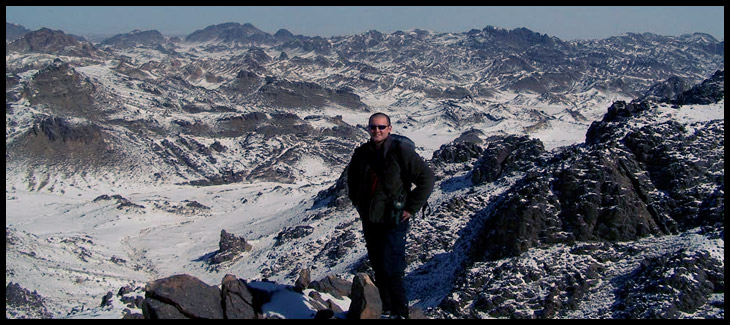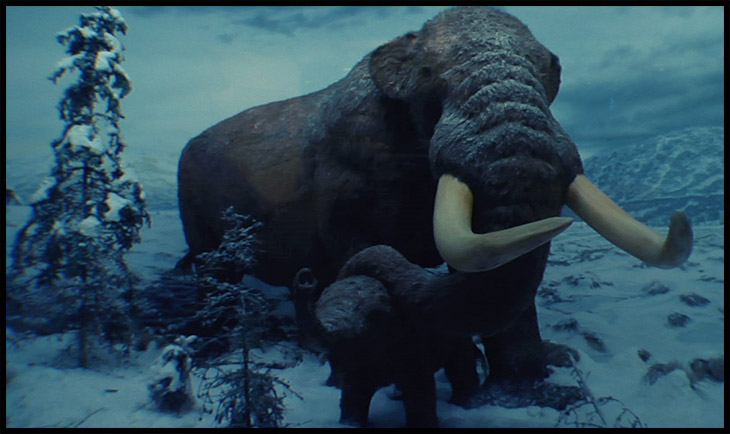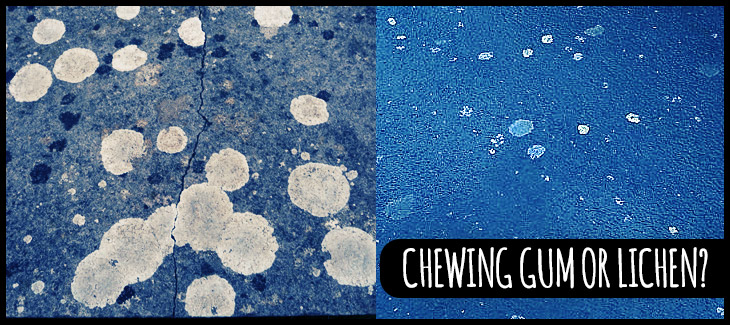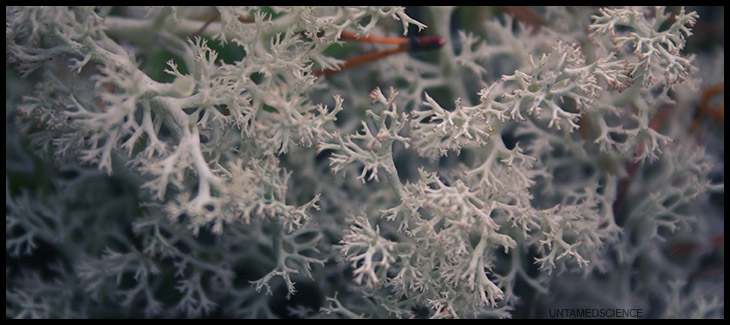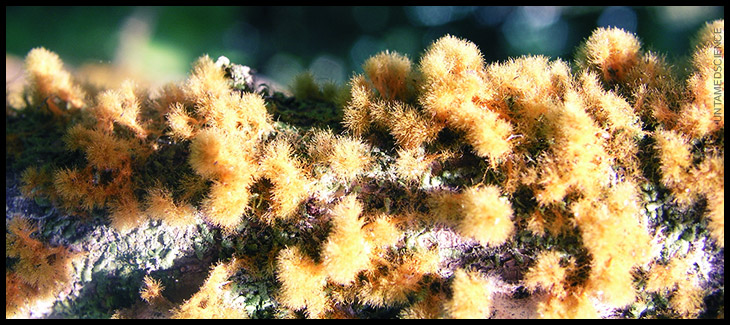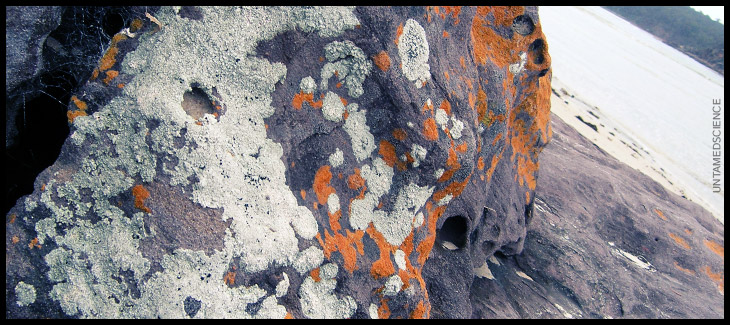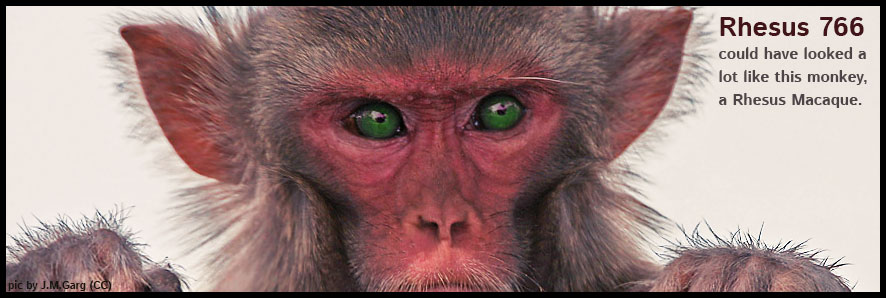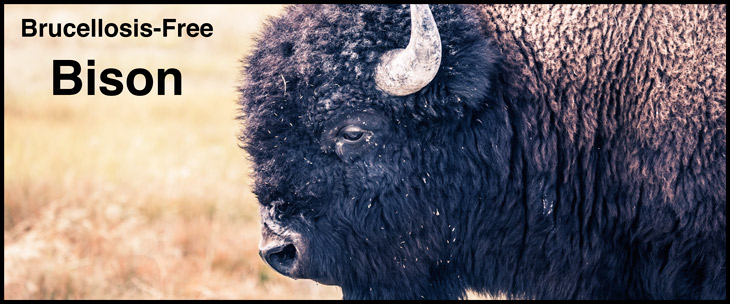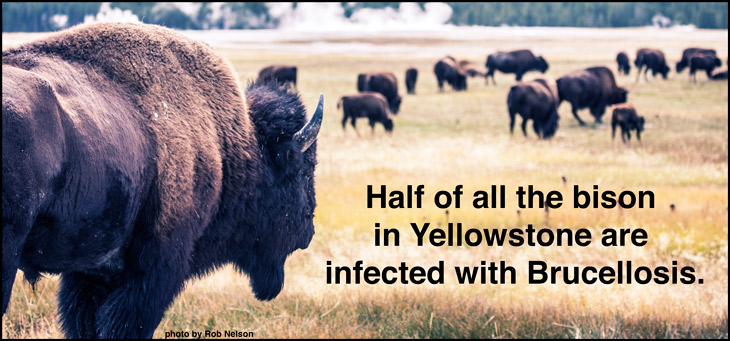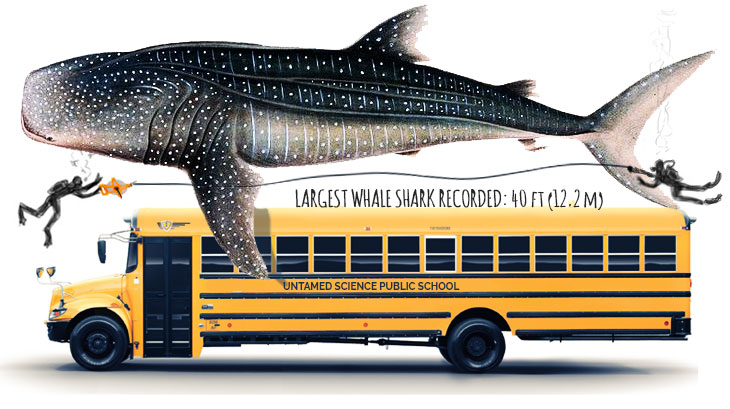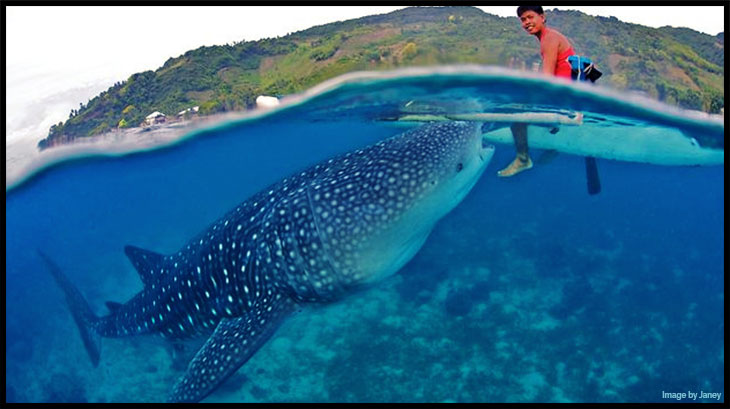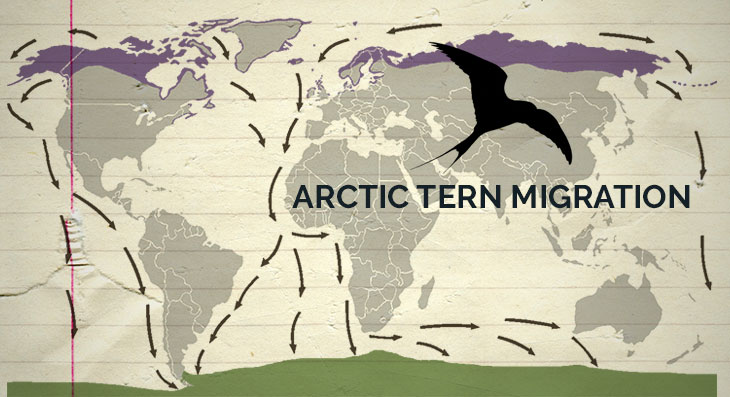The Apex Predator of the Himalayas
Often referred to as the “Ghost of the Mountains,” the snow leopard is an elusive big cat that reigns among the peaks of the Himalayas. Snow leopards act as an ambassador of the planet’s highest places and are considered sacred by the people who live there. As an apex predator, the presence of this big cat indicates a healthy ecosystem.
Snow leopards are known for their striking beauty, with smoky-colored coats tinted with cream and yellow shades and patterned with black spots. The spots are called rosettes, and each cat has a pattern that is unique like a fingerprint. This cat is more medium in size when compared to other big cats. They stand to about 60cm at the shoulder and have a body length between 1.8-2.3m. Their tail can be 1m long! Females can weigh around 35-40kg, while males can weigh 99-45-55kg. Unique among other cat species are their pale grey to greenish eyes.
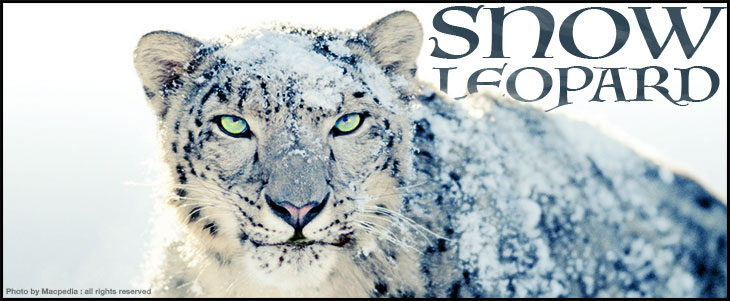
Closest Relatives of the Snow Leopard
Snow leopards belong to the genus Panthera, along with tigers, lions, common leopards, and jaguars. Although their common name suggests that they could be closely related to common leopards, they are actually most genetically related to tigers. Currently, there are 4,000 to 7,000 snow leopards left in the wild. Their elusive nature and high altitude habitat make them very difficult to find and study or to gain a more precise population estimate. China has the largest population of between 2,000 to 2,500 snow leopards; Mongolia comes in second with about 1,000 snow leopards.
Snow Leopard Habits
Snow leopards communicate with one another through territorial marking methods, such as leaving scrape marks, scat, spraying rocks with urine, scratching on trees, and rubbing their face on rock surfaces. Unlike other big cats, snow leopards can’t roar. However, they can growl, hiss, spit, and make chuffing sounds. During breeding season, they will often communicate with loud yowling cries that carry across the mountain range. Outside of breeding season, snow leopards are primarily solitary. Sometimes siblings will stay together for some time after they venture from their mother. This cat is most active around dusk and dawn (crepuscular) and throughout the night (nocturnal), whereas people are active during the day (diurnal). In areas where there are few people, snow leopards may be more diurnal.
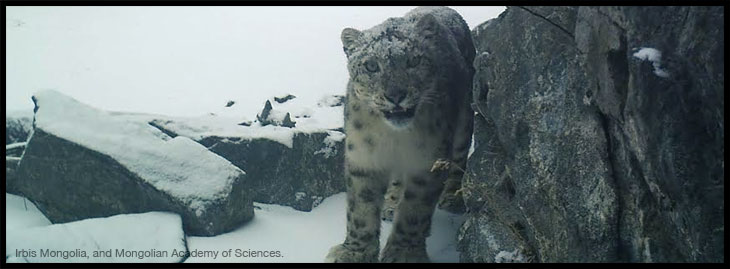
Snow Leopard Reproduction
Breeding season occurs once a year between January and mid-March. Intense vocalizations and marking activity takes place during this time frame. Estrus in females can last anywhere from 2 -12 days, and gestation will last between 90-103 days. The specific mating season ensures that cubs will be born in late spring or early summer and have plenty of time to grow strong enough to keep up with their mother during the winter. Average litter sizes are usually 2-3 cubs. For the first 4-6 weeks, cubs will remain hidden in a den-site. Then they will stay with their mother for 18-22 months before setting off on their own. By age 2 or 3, snow leopards are mature enough to mate. It is estimated that wild snow leopards may live up to 10-12 years.
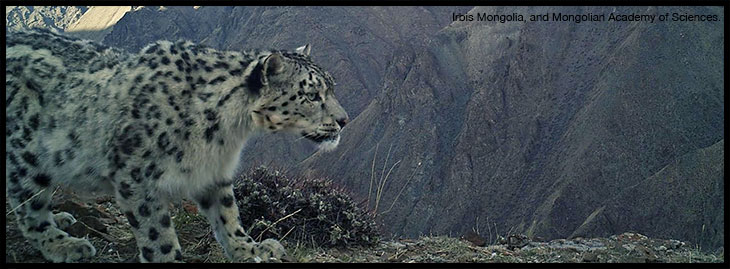
Snow Leopard Range
The twelve countries that encompass the snow leopard’s range include: China, India, Mongolia, Russia, Bhutan, Afghanistan, Nepal, Kyrgyzstan, Kazakhstan, Tajikistan, Pakistan and Uzbekistan. They are generally found at elevations between 3,000-5,400m above sea level. In Russia and Mongolia, they may be found as low as 600m. Patrolling ridge-lines and rocky outcrops, a snow leopard’s home range is dependent on the availability of prey. Home ranges have been recorded at being as small as 60km2 or as large as 1,000km2.
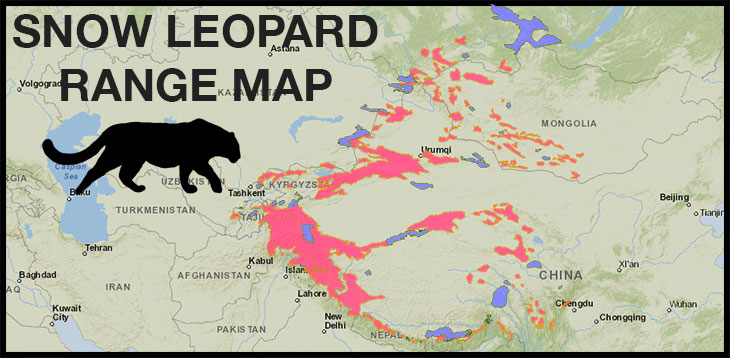
Adaptations: Warmth and Agility
There are several physical features of snow leopards that have aided in their adaptation to a rugged, harsh environment. Snow leopards use their long, thick-furred tails not only for balance as they leap across ledges and boulders, but also to wrap around themselves to keep warm. The hair on their bellies can be up to 12cm thick to protect them from the cold as they walk through deep snow. Short front legs and long back legs enable the cat to more easily climb throughout its habitat. Those legs also allow the cat to be able to jump distances of up to 15m across and 6m high! Wide paws act as snowshoes, keeping the cat from sinking in snow, and allow for a more effective grip on steep rock faces. Compared to other big cats, snow leopards have large nasal cavities, which function to help warm the frigid air before it hits the lungs. Surprisingly, when it comes to being physiologically adapted to breathing at high altitudes, snow leopards’ blood oxygen is no different than a house cat! Researchers are still trying to figure out how they cope. One theory suggests that the cats may just breathe harder.
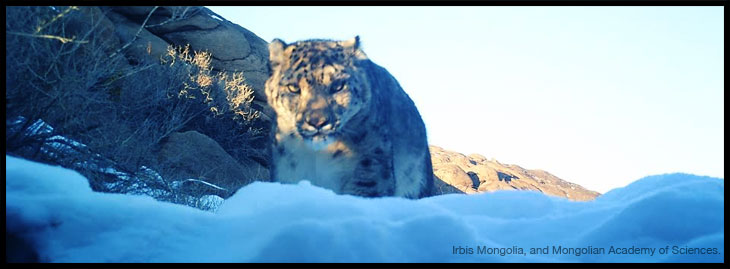
Snow Leopard Diet: Meat and Veggies
The main prey sources for snow leopards are ibex and blue sheep. In areas where there isn’t as much large prey, smaller animals such as marmots become the food staple. Interestingly enough, snow leopards will also consume quite a bit of vegetation. Entire scats may be made up completely of plant material. Other cat species will also eat some amount of vegetation but not in the same high quantities as snow leopards. Where wild prey is scarce, snow leopards will attack livestock such as goats and sheep more frequently.
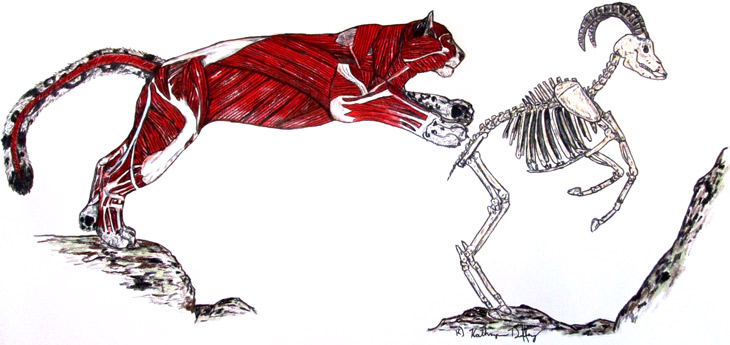
The Snow Leopard: Threatened by Climate Change and Poachers
Snow leopards are listed as Endangered on the IUCN Red List. Climate change is one of the environmental concerns for this big cat. Wildlife that is adapted to cooler climates in mountain habitats move higher up as temperatures rise. However, there is less vegetation at higher altitude for wild prey, which means there is less to eat for snow leopards. Due to habitat degradation from too many free-ranging livestock that outcompete wild prey, the cats are more likely to come into contact with human settlements. They are forced to hunt livestock in many regions since they are easy, plentiful prey. This leads to retaliatory killings of the cats when angry herders want to defend their property, which is their sole income. Another major threat is poaching. Wanted for their luxurious pelts, as well as their bones and organs as an alternative to those of tigers for traditional medicine, snow leopards are hunted illegally. A poached snow leopard can provide up to 75% of an average annual wage in the regions where they are hunted!

There is also a lack of awareness about these cats in general and of how human activities and land use are affecting them. Conservation of any species begins with public education. Although the cats are revered, support from many locals to protect them is conflicted since the priority of the herders is to protect their livelihood. If conservation organizations work with herders to prevent livestock losses from snow leopards, they are more willing to participate in predator-friendly livestock husbandry. Organizations such as Snow Leopard Conservancy, Snow Leopard Trust, and Panthera are regularly involved in research as well as conflict mitigation between snow leopards and people. New technologies are being deployed and tested, as is the establishment of alternative income sources to help families earn extra money while participating in coexistence programs to protect the species.
Conservation Agencies Doing Snow Leopard Work

If you want to study snow leopards, it’s important to understand a bit about what it’s like to work in the field. The following researchers have a diverse background and allow for unique perspectives as a snow leopard researcher.
Katey Duffey
Katey is a wildlife biologist and conservationist that has spent both winter and summer seasons in Mongolia researching this large predator. Her primary goal has always been to find ways that these large cats can live in tandem with the people of the area. Read more about Katey here.
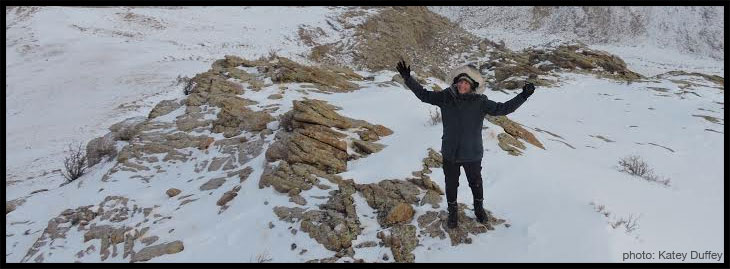
Shannon Kachel
Shannon is a PhD student who is leading a research project in Kyrgyzstan aimed at understanding how snow leopards interact with other large carnivores like wolves and bears. His research also deals with traditional herding in the mountains of Tajikistan. Read more about Shannon here.

Jan Janecka
Dr. Jan Janecka is focusing in part on conservation genetics of snow leopards. He has conducted field expeditions, trained biologists, and taught genetics in numerous Asian Countries including Mongolia, China, Nepal, India, and Bhutan. Read more about Jan Janecka here…
